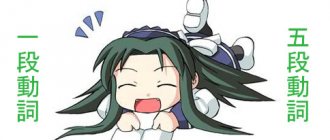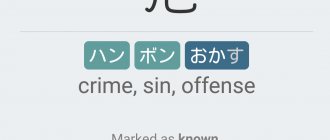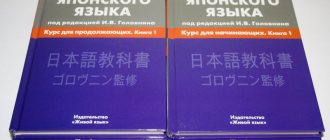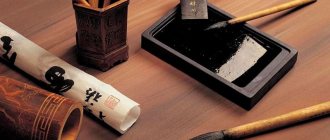To enter Japanese universities, it is theoretically necessary to pass a special language exam - Ryugaku Shiken. But in most non-Japanese-speaking countries it is not conducted, and in Russia this exam can only be taken in Vladivostok. Therefore, many universities in Japan accept students who have received the Noreku Shiken certificate, or The Japanese Language Proficiency Test. T&P has compiled useful information to help you cope with this challenge.
Nihongo Noreku Shiken is an international exam that allows you to determine the level of Japanese language proficiency of foreign students. The exam has been conducted since 1984 with the support of the Japan International Education Association and remains the main and most popular exam for determining the level of Japanese proficiency. In Russia, The Japan Foundation is responsible for conducting the exam. More than 600,000 students take the exam every year.
Nihongo Noreku Shiken is taken for different purposes: the initial levels of the exam allow you to track progress in learning the language and personally become familiar with the structure of the exam. The high-level JLPT is taken by people who intend to connect their future lives with Japan in one way or another: find a job in a Japanese company or undergo a professional internship.
The exam is taken without the use of computers, but is entirely checked with its help. Upon successful completion, the student is issued a perpetual international certificate, which has its own individual unique number.
The last time the exam underwent changes was in 2010. It is now a standardized test of five levels of difficulty (from N5, which tests basic introductory Japanese, to N1, which tests proficiency in Japanese at a level comparable to that of a native speaker). The most popular exam level is N2.
Level N2 implies almost fluent command of Japanese. A candidate for the certificate must have a good understanding of Japanese grammar and know more than 6,000 words that can support a conversation on any general topic. This level can be taken after an average of 600 hours of language study.
The exam of any level consists of three sections: vocabulary + hieroglyphs, reading + grammar and listening. The tasks in each section are presented exclusively in test form. Only the complexity of each section and the time allotted to complete the tasks depend on the level. There are no tasks to test speaking and writing skills in the JLPT.
At levels N1 and N2, the “vocabulary and hieroglyphics” and “reading and grammar” sections are combined into one block, and 105–110 minutes are allotted to them. After the first block, there is a break for 30 minutes and listening is carried out for 50 minutes.
Vocabulary and hieroglyphics + reading and grammar (105 minutes)
The section contains up to 45 questions on the correct identification of hieroglyphs and synonyms for them. The skill of distinguishing the writing of hieroglyphs: katakana and hiragana is also tested.
Reading and Grammar
Contains 20 questions that test the ability to understand the meaning of texts. The candidate is also asked to choose the correct word or phrase to fill in the semantic gaps in texts and dialogues.
Listening - 50 minutes
Unlike the easier levels of the exam, listening at level N2 requires not only to hear and understand dialogues, but also to form an idea of the logical connections within them. News is often used as listening material, covering not only everyday topics, but also a wider range of topics. The task recording is played only once.
What are the points made up of?
For each section you can get up to 60 points, the maximum number of points for the entire exam is 180. For each section of the exam there is a minimum passing score. The minimum percentage of correct answers in each section is 32%. If at least one section is solved correctly by less than 32%, then the entire exam will not be counted. The percentage of correct answers for passing the exam varies from 45% for N5 to 56% for N1.
Nihongo Noreku Shiken is held twice a year on the first Sunday in July and the first Sunday in December. You can register for the JLPT three months before the test date and within just a few weeks (it’s best to check the Japanese embassy website for information on test dates and registration). Passing the exam costs around 2300 rubles.
Results become available online two months after the exam.
Bookstores in Japan offer a wide range of study guides for preparing for Noreku Shiken at all levels. Entire series are often published, where each individual textbook is devoted to a specific topic: grammar, hieroglyphs and expressions that you need to know to successfully pass any JLPT level. You can even arrange a mini-exam at home by purchasing a collection of tasks from previous years or a collection of tests, where the tasks are in the same order as in the exam: from hieroglyphs to listening.
Many exam preparation textbooks are published every year: there are textbooks that cover all sections of the exam in its entirety, as well as textbooks that focus on a specific aspect of the exam.
Options for tasks on the official website
Tests for previous years
The most popular JLPT preparation series "Nihongo Somatome"
Level 2 Grammar Student
Marina Shandra
student who took N2
- To prepare for the JLPT, you definitely need to either take courses or solve exam options for previous years in order to get better. When taking the JLPT, the speed of completing tasks is extremely important, because on average one question takes from 30 seconds to 1 minute. You need to train yourself for speed and do time tests from the very beginning of your preparation. Time is as much of an issue in the JLPT exam as it is in the HSK exam, so the key to passing the exam is to manage your time effectively, leaving difficult questions for later, and focusing on those questions that seem easy to you and you are confident about the answer.
In the remaining time, try to finish difficult questions, but if there is no time left, then answer at random; you cannot leave a single question unanswered - the probability of guessing the correct answer is 25–33% (in tests there are 3-4 answer options).
When preparing for the exam, special attention should be paid to hieroglyphs. Memorizing hieroglyphs requires persistent training of memory, hand and associative thinking.
The ability to quickly cover and analyze a significant body of text is essential to success on the JLPT. It is especially useful when listening, when before turning on the audio recording you need to immediately look at and remember all possible answer options in order to then listen to the recording, keeping them in your head.
For the JLPT exam, there are lists with the minimum number of words that you need to know to pass the exam at any of the levels. It would be a big mistake to start teaching them from there. They should be studied in context, so it is worth reading more of all kinds of stories, articles, texts. These lists can only be used to identify gaps in knowledge of certain words.
The main advice is to buy a separate textbook on hieroglyphs and words of a particular level and a separate textbook on grammar. A trained ear will help you pass the listening test - listen to Japanese radio more, watch films and programs, and, if possible, communicate with the Japanese as much as possible.
Level 3
Language competence is determined by the ability to understand Japanese as it is used in everyday situations.
Reading skill is identified by examining the ability to understand written materials with specific content related to everyday topics. The ability to comprehend summary information such as newspaper headlines is also assessed. In addition, the ability to read not very complex texts related to everyday situations is tested, and to understand the main points of the content if there are several alternative phrases to help understand it.
Listening assesses a person's ability to listen and comprehend sequential conversations in everyday situations, speak at an almost natural speed, and the ability to follow the content of a conversation, as well as grasp the relationships between the people involved.
Marina Bondarchuk
student
- The main and most basic advice: don’t worry! I myself know many examples where qualified translators took the 1st level, but did not pass, and there are guys who do not speak the language perfectly and successfully pass this exam.
Difficulties with grammar tasks should not arise if you first solve several test options and are confident that the level you have chosen is correct for passing the exam. Choosing a level is really responsible: after all, you need to be able to soberly assess your own abilities. If you choose correctly, there will be no problems with completing tasks. In principle, you can prepare for the JLPT in just one month, having a good basic level of language and just honing the format.
The oldest Japanese language school in Tokyo
Kojima Michiko, Principal of Naganuma School
The Naganuma School in Tokyo's crowded Shibuya district was founded in 1945 and is the oldest surviving institution specializing in teaching Japanese as a foreign language. Kojima Michiko, the school's director, says that the bulk of those studying the language in the early post-war years were Western diplomats and Christian missionaries. She also notes changes in the student body during her thirty years at the school. “When I started working, we had a lot of Korean students trying to get into Japanese universities, often to get a second degree. There were also many foreigners from Western countries who learned the language for work. Over the years, the number of students from China, Korea and Southeast Asia planning to enroll in universities has increased significantly, but does not account for half of the enrollment. Most still learn the language for work and business.”
Subtitle
If you are studying Japanese or are just planning to embark on this difficult path, then most likely you have heard that there is an exam to determine the level of Japanese language proficiency, Nihongo Noryoku Shiken.
In 1984, when foreigners were training and hired by Japanese companies, the need for official confirmation of knowledge of the Japanese language increased and it was decided to create a single exam that could do this. This is how Nihongo noryoku shiken (日本語能力試験)
| Nihongo nouryoku shiken) is an exam aimed at determining the level of Japanese language proficiency among non-native Japanese speakers.
The remarkable thing is that this exam can be taken in almost any country, not necessarily Japan, and the certificate will be valid throughout the world. Typically, Nihongo noryoku shiken is held 2 times a year, on the first Sunday of June and December, but depending on the country or city of residence, it can be held only in summer or only in winter.
To sign up for the exam, you need to select the level that suits you a few months before the exam, submit documents to the Japan Foundation (in Moscow this is the department of Japanese literature at the All-Russian State Library for Foreign Languages), pay a small fee and wait for the exam to begin. You can find out more detailed information about the exam location in your city on the relevant websites according to your place of residence.
The exam tests the level of Japanese proficiency in several categories:
Vocabulary and hieroglyphics
— an average of 40 tasks, where the examinee needs to choose the correct hieroglyph from those offered, determine the correct spelling in hiragana or katakana, and also arrange parts of the sentence in the correct order.
Reading and Grammar
— in this part of the text, the examinee must answer 20-30 questions on grammar, read several texts, after which he must answer questions correctly or insert missing words into sentences. Requires almost complete understanding of what is written, therefore, in my opinion, it is the most difficult part of the exam.
Listening
- in some tasks you need to listen to the recording and choose the correct image or text answer, while in other tasks you need to perceive everything only by ear, answering the questions asked or choosing the correct information based on the text you heard.
It is worth noting that the exam is a test, so in all tasks you need to choose either the correct answer or arrange the words in the correct order. Even if you don’t know the answer 100%, you can find it out by elimination, which makes the exam a little easier.
Grading system:
For each part of the exam you can score from 0 to 60 points (at some levels the parts of the exam are combined and you can score from 0 to 120 points). In total, you can score up to 180 points for the entire exam, 60 in each part. For each level of Japanese, you must achieve a certain minimum score in order for the exam to be considered successful. For example, at level 4 you need to score at least 90/180 points, i.e. at least half. However, there is an important condition that you need to score at least 19 points in each of the three parts of the exam. In other words, if you have an overall score of 120, but only 10 points in the listening test, then the exam is considered failed. You need to try to score maximum points in all three parts.
The Nihongo Noryoku Shiken exam has 5 difficulty levels:
Level 5 (N5):
This is the most basic level of knowledge of the Japanese language, including only the very basics. You need to know only 105 hieroglyphs, about 800 words and several dozen simple grammatical structures.
You need to dial 80/180
points.
Level 4 (N4):
The fourth level is a more detailed in-depth understanding of the Japanese language, which implies familiarity with敬語
(Keigo) polite Japanese, knowledge of at least 300 characters and 1500 words. Grammatical constructions allow you to build complex sentences with turns.
You need to dial 90/180
points.
Level 3 (N3):
With the third level you can already get a part-time job in Japan. It is assumed that a person can already communicate on everyday topics, write essays and read simple books. For this level you need to know about 670 hieroglyphs and 3500 words.
You need to dial 95/180
points.
Level 2 (N2):
The second level of Nihongo noryoku shiken allows you to enter some Japanese universities and colleges, as well as get some jobs in Japan. Implies good command of the Japanese language and communication on almost any topic. For this level you need to know at least 1000 characters, more than 6000 words and almost all the grammar used in everyday life and books.
You need to dial 90/180
points.
Level 1 (N1):
In order to find a job in a Japanese company and work on an equal basis with the Japanese, as well as enroll in good universities in Japan, you must have a Nihongo noryoku shiken level 1 certificate. The holder of such a certificate must be fluent in polite Japanese, conduct business correspondence, read books in the original, and know a lot of rarely used grammar. You need to know at least 2,000 hieroglyphs and more than 10,000 words. This is the highest level of Nihongo noryoku shiken. When applying for a job, a foreigner will most likely be asked for a Level 1 certificate.
You need to dial 100/180
points.
From the outside it doesn’t seem easy, but in reality it’s not all that scary. If you want to learn Japanese, you can do this and get level 1. In addition, please note that the exam does not test spoken Japanese, which makes the task much easier.
A few months after passing Nihongo noryoku shiken, each participant receives exam results, which indicate the overall score, points scored in each category and test status. If it is written合格
(goukaku), then you can celebrate - the exam has been passed.
If the inscription is 不合格
(fugoukaku), then this means that the exam was failed and you will need to try harder next time.
Don’t rush to pass at a high level right away, but test your strength. I am sure that everything will work out for you.
If you want to start learning Japanese or learn something that you won’t find in regular textbooks, then you can go completely and subscribe to ours. All lessons are built using our own unique methodology, and all dialogues are voiced by a native Japanese speaker.
Never be afraid to learn something new.
See you in class and good luck on your exams!
The Japanese language lessons posted in this section will be useful to those who plan to independently learn the basics of the Japanese language. If you have already sufficiently mastered the Japanese writing systems and phonetics presented in the Introduction to Linguistics section, you can proceed to familiarize yourself with the materials in this section.
The course “Fundamentals of Linguistics” includes main lessons (block 1, 2 and block 3), designed for 6-8 academic hours of independent study each, as well as a number of additional exercises on the main topics of the course - block 4 (6 more additional lessons, calculated for 24-30 academic hours). These materials will give you a general idea of the structure of the Japanese language. Each lesson includes several paragraphs: vocabulary, grammar, exercises and tasks with answers, hieroglyphics, and listening (“listening comprehension”). To learn more about the structure of the lessons, go to the area of block No. 1 at the end of the page. The final stage of the “Fundamentals of Linguistics” section is an online (interactive) test. With its help, the user will be able to assess how successfully he has mastered a particular volume of material. The procedure for opening access to site materials is described in detail in the Help section. Lesson materials are posted on the website in blocks, in accordance with the curriculum.
Some Japanese advertising, 1972
I bring to your attention unique scans from the 1972 catalog. I would be grateful for comments from all Japanese experts, since translation from photos did not help much! In two cases, I didn’t even understand what exactly was being advertised there.
Brook Bond tea bags. Judging by the translation of the lower inscription, its sales in Japan were handled by the Mitsubishi conglomerate.
Sounds like baby orange juice? The brand is read as "Mayeto" or "Mayedo". The meaning of slogans remains beyond my understanding.
Japanese airline advertisement. Boeing 727 and typical phrases like “Experience the joy of a new journey” and “We promise unforgettable memories.”
Oil refining company Daikyo Oil Co., Ltd (14 years later acquired by Cosmo Oil Corporation).
And here there was some bravado, in the spirit, “We are growing and moving forward into the future.”
And of course, those promised two advertisements, the essence of which I did not understand. Write in the comments if you can figure it out.
Materials available for study:
Lesson block No. 1. Fundamentals of linguistics. Part No. 1.
Lesson description: Working with a flash simulator as one of the options for successfully mastering lexical material and hieroglyphs
Lesson description: Nouns. Nominative case. Personal pronouns. A simple sentence with a nominal predicate. Affirmation and denial. Interrogative sentence. General concepts about hieroglyphs, rules for writing them. Information table with copybooks - the main features of hieroglyphic signs.
Lesson description: Demonstrative pronouns. Genitive case of nouns. Possessive pronouns. Interrogative sentences. Reading hieroglyphs. Information table with copybooks for hieroglyphs 人、水、上、一、二.
Lesson block No. 2. Fundamentals of linguistics. Part No. 2.
Lesson description: Japanese verbs. Simple sentences with a verbal predicate. Interrogative sentences with a verb as a predicate. Accusative case of nouns. Common sentences with a verb predicate. Graphic elements of hieroglyphs. Concept of hieroglyphic key. Table of key characters. Information table with copybooks for hieroglyphs 日、月、女、子、木.
Lesson description: Numerals in Japanese. Counting system. Initial and ultimate cases of nouns. Joint case. Information table with copybooks for the hieroglyphs 三、四、五、十、百.
Lesson description: The most common cases of nouns. Common sentences with a verbal predicate. Information table with copybooks for the hieroglyphs 六、七、八、九、万.
At the basic, fifth level of studying Japanese, students are introduced to the basics of grammar, vocabulary and writing. The teacher pays special attention to the development of basic conversational and grammatical skills. At the end of the level, students are familiar with two alphabets of the Japanese language (hiragana and katakana) and can use them when reading simple texts and writing, and master more than a hundred hieroglyphic units. About 800 lexical units are mastered, which allows you to maintain a conversation on the topics studied. Much attention is paid to pronunciation. After completing the course, students can take the Nihongo Noryoku Shiken level five international exam.
Jap 4(A2)
Listeners can understand texts written using basic vocabulary and hieroglyphics (everyday Japanese). The vocabulary increases to 1500 lexical units. Can understand spoken language and participate in dialogues if the other person speaks slowly and clearly. Upon completion of this course, you can take the international Nihongo Noryoku Shiken exam to the fourth level.
Jap 3 (B1)
The Japanese language is studied in depth. The main emphasis is on grammar, vocabulary and hieroglyphic material, written speech and listening comprehension of Japanese speech are practiced. Students can read texts of a high level of complexity and can understand most dialogues on everyday topics, which are given at an almost natural pace. A large amount of new vocabulary is given, various aspects of life in modern Japan are considered. To fully understand everyday Japanese, you need to master approximately 600 characters and 2500-3000 words. Upon completion of this level, you can take the international Nihongo Noryoku Shiken exam for the third level.
Jap 2(B2)
Listeners perceive authentic materials - newspaper and magazine articles, media reports, audio and video materials. The grammar and vocabulary learned at previous levels is skillfully used, thanks to which discussions are successfully conducted. The vocabulary is about 6,000 lexical units and 1,000 hieroglyphs. Upon completion of this level, you can take the international Nihongo Noryoku Shiken exam for the second level.
Jap 1 (C1)
At this stage, students are able to express themselves freely and fluently in Japanese and read complex, unadapted texts (newspaper articles, literature). You can understand the interlocutor’s speech at a natural pace. The practice of communicating directly with a native speaker is important. There is an acquaintance with the business sphere of the Japanese language. About 2,000 hieroglyphs and up to 10,000 words are learned. Upon completion of this level, you can take the international Nihongo Noryoku Shiken exam for the first level.
The duration of training ranges from 96 to 216 academic hours, depending on the level.
Main exam categories
The test consists of three sections:
A certain period of time is given to complete each part of the exam, the length of which depends on the level of the test. All parts present finish together; you cannot proceed to the next stage ahead of time.
| Levels | Stage and time of passage | Total execution time |
| N1 | vocabulary, hieroglyphics, grammar, reading (110 minutes); listening (60 minutes) | 170 minutes |
| N2 | vocabulary, hieroglyphics, grammar, reading (105 minutes); listening (50 minutes) | 155 minutes |
| N3 | vocabulary, hieroglyphics, grammar, reading (30 minutes); grammar, reading (70 minutes); listening (40 minutes) | 140 minutes |
| N4 | vocabulary, hieroglyphics, reading (30 minutes); grammar, reading (60 minutes); listening (35 minutes) | 125 minutes |
| N5 | vocabulary, hieroglyphics, reading (25 minutes); grammar, reading (50 minutes); listening (30 minutes) | 105 minutes |
Lively discussion
In light of the growing interest in learning Japanese, Ueki describes demographic changes among student groups: “When I started teaching Japanese, the economy was growing rapidly, and we saw many upper-class students who had received grants from their governments and came to study the language for use in financial and commercial areas. But when the economic bubble burst, these students were replaced by people with a strong personal interest in Japanese culture, or even the subculture, manga, etc.”
How much of an impact has otaku culture had on the surge in interest in Japan and the Japanese language? A week after that, we spoke with a prominent scholar of East Asian culture, and she pointed out the lack of substantive analysis of the manga and anime comics that lead many students to study Japan. At the same time, it is worth mentioning the advice one of the competition participants gave to beginners learning Japanese: “Don’t count on learning good Japanese from anime with subtitles. It won't work that way. If you're going to use anime, at least turn off the subtitles."
We express our gratitude to the Naganuma Japanese Language School.
Banner photo: Speech contest participants Meina Naeimirad (USA), Evelyn Stauzenberger (USA), John Lingyi (England), Zhang Yahao (Taiwan), Hao "Kaku" Suion (China) and Allison Lai (Taiwan) in front of Naganuma School 29 August 2014 (English article published September 12, 2014)









